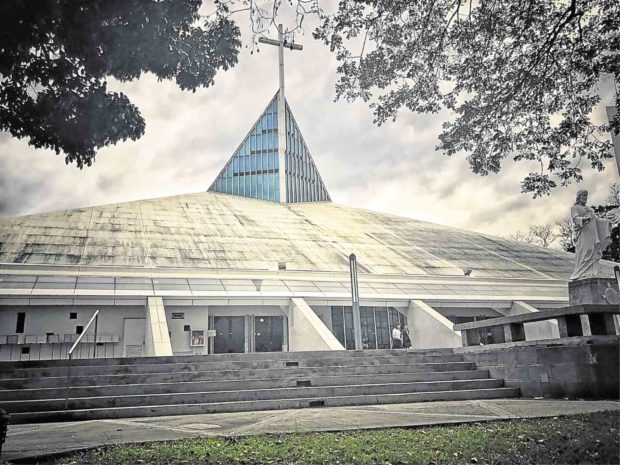
The proliferation today of high- and mid-rise residential buildings in Metro Manila and key Philippine cities makes it hard to imagine that before the late ’90s, few Filipinos could see themselves living in a unit several stories above terra firma.
A counter response to the trend then of living in subdivisions far from places of work in the city centers, high-rise living in Makati and other central business districts fortunately had convincing proponents. Among them was an architectural firm whose principals had been honed in designing high-rise residences in one of the densest cities in the world, Hong Kong.
Recio + Casas introduced to the country architectural landmarks that also set benchmarks for high-rise living—from the top-end Pacific Plaza Towers in its Ayala Avenue and Bonifacio Global City locations, to the less socially daunting Lafayette and Paseo Parkview towers in the Makati business district, to the more affordable Eastwood City Complex, and many more.
In all these projects, they married form and function to suit the budgets of end-users and made high-rise living a highly viable option.
For “demystifying” the high-rise environment in the country and other accomplishments, Jose Pedro Recio, better known as “Bong,” and Carmelo “Meloy” Casas, recently received the Gold Medal of Merit Award, the highest honor from the Philippine Institute of Architects (PIA), the oldest architectural organization in the country.
Just like the Oscars, “it is an award bestowed by peers, and that makes this award very different,” according to Joel Vivero Rico, past PIA president.
The award puts the two recipients in the company of Fernando Ocampo Sr., designer of the Manila Cathedral in Intramuros; Juan Felipe Nakpil, known as the architect of Quiapo Church; Juan Marcos Arellano, who conceptualized the Metropolitan Theater; and Leandro Locsin, designer of the Cultural Center of the Philippines. Others who have received the award in more recent years have been Cesar Concio, Jose Ma. Zaragoza, Pablo Antonio and Carlos Domingo Arguelles.
The joint accomplishment of Recio and Casas, who now have their own individual practices, was in redefining “the 21st century Philippine skyline,” Rico said.
From another perspective, the Recio + Casas partnership could also be credited with priming Metro Manila to become a global city with residential and office towers that have improved quality of life at the city center.
Their training ground was Hong Kong at the height of its building boom in the last three decades of the 20th century. “All the areas along the MTR route were prime real estate properties and there was construction everywhere,” Casas recalled.
There, they joined key architectural firms with multinational backgrounds and rose from the ranks to become associates, then partners. In the process, they learned to value every square inch of space available to them in that space-starved city.
Winning the ABS-CBN competition for the renovation of the QC Broadcast Center, and being awarded the Pacific Plaza project on Ayala Avenue, with Casas as the principal designer, prodded them to return home. They also tried their hand in projects in Thailand, such as the Thailand Stock Exchange Building, and projects for Metrobank headquarters in Shanghai.
First
All that experience under their belts armed the two with confidence to take on Manila projects, including the first high-rise “Hong Kong-style,” Kingswood Towers on Vito Cruz Extension.
Kingswood offered residential units with three bedrooms and even a helpers’ room from a mere 78 sq m—then a groundbreaking layout that has since paved the way for more mid-income earners to achieve the dream of owning their own home.
A host of other projects followed including institutions such as Enderun College, British Embassy, Ateneo de Manila University’s Rizal Library, and the multi-awarded Church of the Gesu, also in Ateneo, with Recio taking the design lead and thoroughly enjoying working on another genre of projects.
The Church, which has been described as a “giant triangle anchored to the ground and rising to a pinnacle,” recently received a prestigious award from the National Commission for Culture and the Arts (NCCA), a first by the NCCA. It was cited as a building expressing and furthering the Filipino spirit and identity in its transparency, openness and inclusivity.
Eventually, Recio and Casas both felt a deeper calling for projects offering differing challenges in typology. It was not surprising that the partners would eventually part ways. Close to 2008, or after an intense decade of work on a range of high-rises, both sought an amicable parting of ways “while the firm was still at its peak,” Recio says and with still plenty of work for two firms to handle. Each of those firms would be led by a partner.
Ten years later, today, both Recio and Casas head active and dynamic organizations. Casas + Architects, Inc. has continued to evolve the high-rise culture with a host of new projects such as St. Francis, One Shangri-La Place, Grand Hyatt, Resorts World and projects for major schools such as University of Sto. Tomas, Lyceum of the Philippines and Far Eastern University.
Recio’s Rchitects Inc. has added Twin Oaks in Mandaluyong and the forward-looking Xavier School in Nuvali to its portfolio.
Meanwhile, architects who have trained with either of the two continue to be sought after by other architectural firms in Dubai, Singapore and Hong Kong—hard evidence that both deserve this latest award from the Philippine Institute of Architects. –CONTRIBUTED